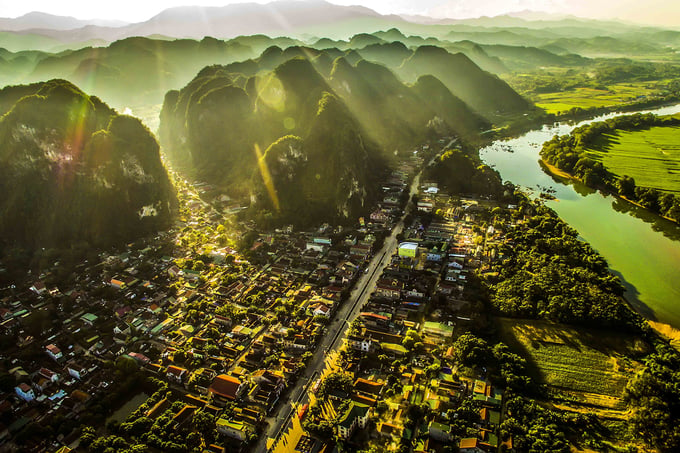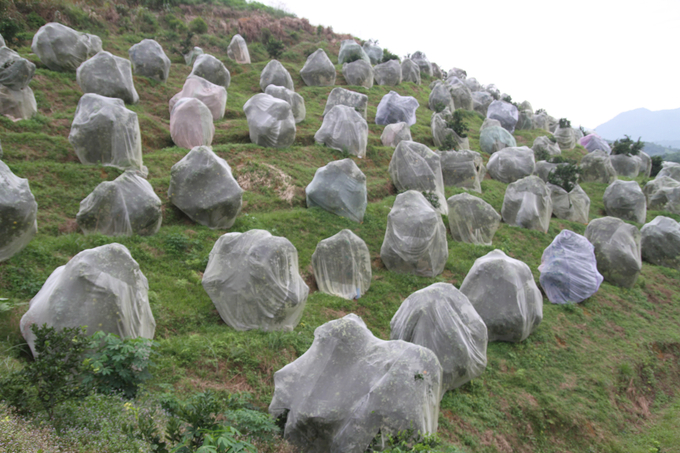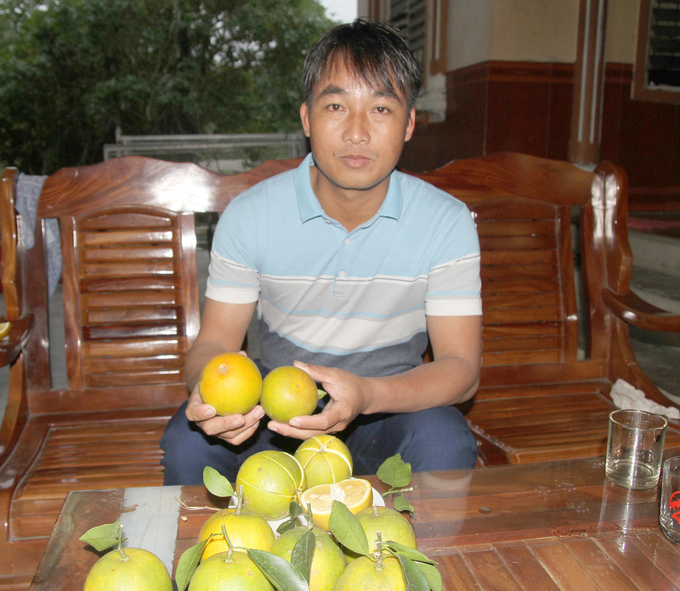November 25, 2025 | 09:43 GMT +7
November 25, 2025 | 09:43 GMT +7
Hotline: 0913.378.918
November 25, 2025 | 09:43 GMT +7
Hotline: 0913.378.918
After 10 years of implementing Resolution No. 26-NQ/TW dated July 30, 2013 by the Politburo, Nghe An has achieved remarkable successes. Most notably, the layout of the entire highland area has changed by applying science and technology to production on a large scale.
The province has made an effort towarsd the goals of hunger eradication, poverty alleviation as well as raise the living standards for the local people. In order to achieve these goals, it is necessary to urgently remove the bottlenecks and backlogs, focus on developing key indigenous products to gradually cover the domestic and export markets.

Western Nghe An converges multiple factors to apply high technology in agricultural production on a large scale.
These are not unrealistic goals considering the background of Nghe An province. Science and technology activities in Nghe An are following the appropriate orientation by focusing on specialty plants and animals; growing and processing medicinal herbs; developing traditional products for each sub-region; thereby contributing to improving productivity and product quality, which has resulted in an impressive economic restructuring.
Statistics have affirmed that the widespread deployment and application of science and technology in Western Nghe An is an appropriate development orientation. The entire region of Western Nghe An is reported to have 13,241 hectares out of 26,555 hectares applying high technology, accounting for 50.13% of the total area in the province. These areas include 365 hectares of vegetable and fruit production; 3,961 hectares of perennial crops and fruit trees; 2,077 hectares of dairy feed production, and so on.
High technology is utilized across many fields, including cultivation, animal husbandry, fisheries and forestry. There are nearly 70,000 cows and 87,375 pigs raised following advanced processes in the Nghe An Highland.

Farmers have actively used nethouses for orange farms.
Western Nghe An is a region with a distinctly dissected topography, a challenging starting point, a high poverty rate, low educational attainment, limited infrastructure system, unmet general needs among many other difficulties. These are considerable obstacles that further illustrate the region's remarkable successes in applying high technology for the last 10 years.
With strong foundation, Nghe An has determined to focus on prioritizing investment and developing key agricultural products with advantages associated with processing and consuming establishments; namely, forest trees to serve wood and furniture processing; short-term and long-term industrial crops such as sugar cane, tea, rubber, etc.; fruit trees such as oranges, tangerines, grapefruit, etc.; high value medicinal plants in specific ecological regions, medicinal plants grown under the forest canopy; animal husbandry including beef cattle, dairy cows, pigs and so on.

Agricultural products have secured a stable source of income for farmers.
Furthermore, Nghe An will utilize its advantages to focus on effectively exploiting forest resources, natural landscapes (ecosystems) and invest in the brand values of the Western Nghe An Biosphere Reserve for the development of eco-tourism, community-based tourism in association with the life and cultural identity of the ethnic groups. Additionally, the province will develop ecological agriculture, high-tech agriculture adapting to climate change in association with various types of agro-tourism.
On the other hand, Nghe An will restructure and develop cooperative groups and cooperatives in agricultural production, direct the construction of new agricultural cooperatives in areas producing key products. The province also aims to organize and rearrange the management boards of protection forests, state forestry companies; review and clearly define the land fund, recover unused or inefficient areas; allocate land to households lacking arable land and other units such as large businesses, to use more effectively.
In recent years, Nghe An has paid special attention to ecologically comprehensive agricultural development, placing high-tech agricultural production as the foundation for a new development trend. The province has worked towards the goal of creating a high quantity of products with excellent quality and outstanding productivity. In addition, the coverage of high technology also contributes to diversifying brands, enhancing the competitiveness of products in the market, and providing for industrial processing.
Ms. Vo Thi Nhung, Deputy Director of Nghe An Department of Agriculture and Rural Development stated that: Nghe An agricultural sector has developed, established and effectively implemented various projects, programs, plans and policies to promote agricultural production from 2015 to 2020, the focus of which is on the application of high technology.
Translated by Nguyen Hai Long

(VAN) The information was shared at the seminar 'Urban Agriculture - Solutions for Developing Green Spaces,' organized by the Kinh te & Do thi Newspaper and the Biotechnology Center of Ho Chi Minh City.
/2025/11/19/4141-2-132831_216.jpg)
(VAN) One of Japfa's outstanding solutions is implementing digital transformation and artificial intelligence (AI) to optimize operations, enhance productivity, and advance sustainable development.
/2025/11/19/4847-1-093540_448.jpg)
(VAN) The Gia Lai Provincial People’s Committee had a working session with the delegation of the U.S. Department of Agriculture, the State of Idaho, and representatives of the State's leading enterprises.

(VAN) Ca Mau has a sufficient foundation to become a strong regional aquaculture center, where production integrates the economy, the environment, and the lives of the people.

(VAN) SEIKI Group envisions itself as a pioneer in the ‘dual transformation’ of digital technology and green industry, standing alongside the Government and Vietnamese businesses in their pursuit of sustainable development.

(VAN) The VNGEONET network affirms Viet Nam's progress in mastering digital space, providing a precise positioning data platform to serve socioeconomic development.
/2025/11/14/3247-1-184556_35.jpg)
(VAN) Thai Nguyen is methodically implementing digital transformation in the livestock sector, laying the foundation for a modern, transparent, and sustainable agriculture.